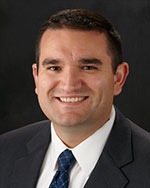Faculty from the Department of Risk and Insurance at the Wisconsin School of Business share key ideas from their research as featured on the Forward Thinking blog.
Professor Margie Rosenberg: The Link Between Unhealthy Behaviors and Perceived Health Status
Fact: Our bodies are machines. Whether we choose to embrace that reality or ignore it, we make choices every day that impact how we feel physically as well as how we feel about ourselves—the way we would evaluate or assess our own state of health.

In a study with my co-author, Kyeonghee Kim, a Ph.D. student in the Wisconsin School of Business at the University of Wisconsin–Madison, we looked at what we define as “unhealthy behaviors,” lifestyle choices that can have significant, long-term impact on our health, and how individuals might rate their own physical health status. These unhealthy behaviors encompassed not only what people might consume—whether that is a steady diet of cigarettes and double bourbons—but also extended to what they are not getting or doing enough of, such as quality sleep and consistent exercise.
Our findings suggest that unhealthy behaviors and how individuals perceived their overall health status were related. We controlled for other variables that might influence an individual’s response, such as age, sex, race, income, education, and health-related items, like comorbidities and inpatient expenditures. Our model showed that if we had no health-related items, individuals with unhealthy behaviors are more likely to rate their health more favorably than if they had health-related items. Also, as the number of unhealthy behaviors grows, the chance that a person indicates a poorer rated health status also increases. A poorer rated health status was more apparent for those with health-related items when the number of unhealthy behaviors increased.
Associate Professor Tyler Leverty: The Financial Hazards of Failure to Act
Insurers are regulated at the state level. The state in which the insurer is domiciled serves as the primary solvency regulator. Thus, it is the job of the domiciliary regulator to identify failing firms and take them over to protect the policyholders. The domiciliary state reaps the lion’s share of economic benefits from an insurer, but the cost of the failure is dispersed across all of the states in which the insurer does business.

Given these facts, it’s conceivable that regulators might hesitate to take over failing firms prior to an election in case it might impact their career goals or cast them in a negative light by having to declare failure on their watch. My co-author, Martin Grace of Temple University, and I questioned: Are regulators less likely to take over a failing firm before an election?
Our study looked at U.S. property-liability insurance companies for the period of 1990 to 2011, examining more than 37,830 firm-year observations across 3,261 insurers. Of these, regulators intervened upon 260 firms.
The results were significant: In election years, both elected and appointed regulators delayed closing failing insurance firms, causing the probability of failure to fall by a whopping 78 percent. Additionally, we found that the magnitude of the delay is greater for elected regulators than for appointed and that in competitive races, such as when appointing governors or insurance commissioners are in a tight election, there was an even greater impact.
Assistant Professor Anita Mukherjee: In India, Micropension Programs Give Informal Sector Workers a Means to Save
For many low-income workers in the U.S. and other parts of the globe, the existence of a pension plan in any form, however limited, is an unimaginable luxury. Employees working in what’s known as the grey or informal sector—workers who are performing legal activities but considered off the radar in official government counts such as taxes, census, or GNP—lack the formal identification documents necessary to access federal programs or resources. Many, though not all, may be struggling financially and living well below the poverty level.

In a 2016 study, Anita Mukherjee, an assistant professor of risk and insurance at the Wisconsin School of Business, and Olivia S. Mitchell, a professor of business economics and public policy at the University of Pennsylvania, surveyed 770 individuals from households in rural Uttar Pradesh, one of India’s poorest states, about the nation’s pension plan. The National Pension System in India offered citizens a micropension product, a fixed voluntary pension contribution designed for low-income individuals, that was incentivized through matching—meeting worker contributions 100% for the first $20 equivalent invested.
Mukherjee and Mitchell found that nearly 80 percent of respondents would be prepared to contribute approximately $30 annually into a micropension product. Surprisingly, this figure dropped if the plan included early withdrawal and eligibility; respondents wanted to see commitment if they were to adopt a micropension plan.
Respondents holding savings accounts going into the study were willing to contribute 10 percent more than respondents without such accounts. Similarly, survey respondents with high financial literacy levels and prior insurance policies reflected a willingness to contribute five percent more than respondents who did not have those attributes and resources. Demographics also played a part: contribution rates for older and male respondents were lower than those of their counterparts.
Associate Professor Justin Sydnor: Choosing the Best Value in a Health Plan (Video)
Our intuition tells us that a low-deductible insurance plan means lower costs, and a high-deductible plan means higher costs. But that isn’t the reality for most employer-sponsored plans, according to research from Justin Sydnor, the Leslie P. Schultz Professor in Risk Management and Insurance and an associate professor in the Department of Risk and Insurance at the Wisconsin School of Business.

Sydnor’s area of expertise is in behavioral economics, with an interest in risk aversion and insurance choices. His research study—“Choose to Lose: Health Plan Choices from a Menu with Dominated Options,” published by The Quarterly Journal of Economics and featured in The New York Times—explores how many people end up choosing a health plan that doesn’t provide the best economic value.
Sydnor spoke about his research at WSB’s Celebration of Faculty Excellence, an event held for the Business Badger community during Homecoming weekend in October 2018. The event highlighted the accomplishments of WSB’s distinguished faculty and the generosity of the donors who support their work. –Text by Jane Burns
Get to know all of WSB’s risk and insurance faculty.
Tags: